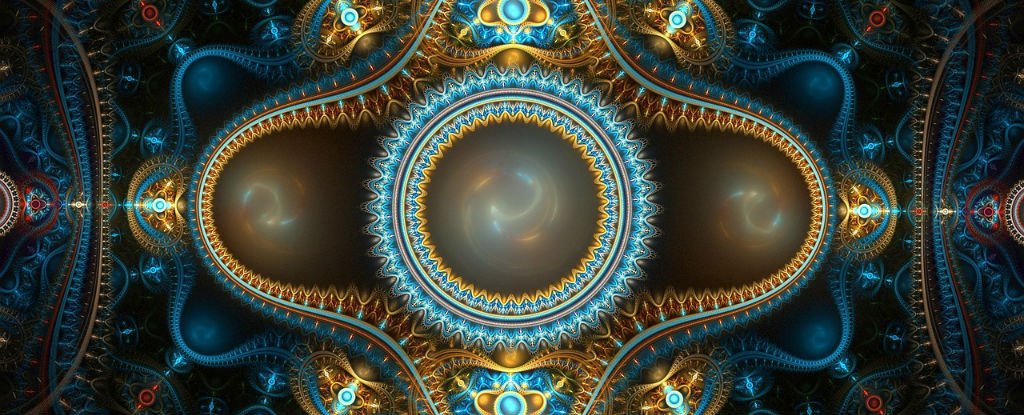 Recently, experiments have been conducted that verify the existence of a state of matter that is called a discrete time crystal. This type of material has a perfect repetition across time, which means that it acts like a Perpetuum Mobile device at the quantum scale, although the accurate specification is that it is non-equilibrium matter that oscillates even in ground state. Ordinary matter such as metal does not tend to change quantum states in the ground state, it is in equilibrium, but by exploiting quantum entanglement, physicists have been able to create setups that cannot stand still in balance. In the quantum realm, our ordinary notions of causality, temporality, and motion do not apply. This is a property that is somewhat unexpected, although superconductivity shows similar aspects. A bit of speculation may be in order.
Recently, experiments have been conducted that verify the existence of a state of matter that is called a discrete time crystal. This type of material has a perfect repetition across time, which means that it acts like a Perpetuum Mobile device at the quantum scale, although the accurate specification is that it is non-equilibrium matter that oscillates even in ground state. Ordinary matter such as metal does not tend to change quantum states in the ground state, it is in equilibrium, but by exploiting quantum entanglement, physicists have been able to create setups that cannot stand still in balance. In the quantum realm, our ordinary notions of causality, temporality, and motion do not apply. This is a property that is somewhat unexpected, although superconductivity shows similar aspects. A bit of speculation may be in order.
The intriguing connection to digital physics (or discrete physics) follows from a basic model in digital physics which is the Reversible Universal Cellular Automata (RUCA). This is a kind of universal computer that works with local transition rules, and the transitions are reversible moves. Reversibility is often attributed to Noether’s theorem, which states that in any system with conservation laws, like in physics, the relations will have to be symmetric. It is debatable whether physical law is fully symmetric, but the mere existence of a time crystal implies that the universe might be a RUCA indeed. An astonishing implication of that would be that we might one day be able to build cool (low temperature) computers that dissipate little heat, which is known as reversible computing. A 10W 10 exaflop/sec computer would not be so bad for AI. A simple way to think of this is that in Newtonian systems, we are constantly hampered by friction, but in a quantum system, we might be able to obtain very small friction. Could we build a basic processor core that exploits some of these physical properties, and could it communicate in an efficient way via superconductivity or photonics? Could a discrete time crystal provide a way to implement a logic gate? That would be an interesting situation, as it could imply that a strong type of immortality is achievable for digital minds, answering the Last Question. Perhaps, the discrete time crystal, is yet another type of a string-net liquid, and string-net liquid computers are possible.
The employment of ground states and quantum entanglement directly ties these studies to quantum computing architectures such as the quantum adiabatic computer. Could this line of research lead to programmable matter, or new facilities for, or even a better basis for quantum computers? A new quantum memory perhaps, or a new kind of quantum algorithm? The first report on sciencealert.com acknowledges that this could lead to improvements in quantum computing; it would not be surprising if an efficient class of quantum automata could be programmed by the initial state and then driven by a low energy input to the system.
